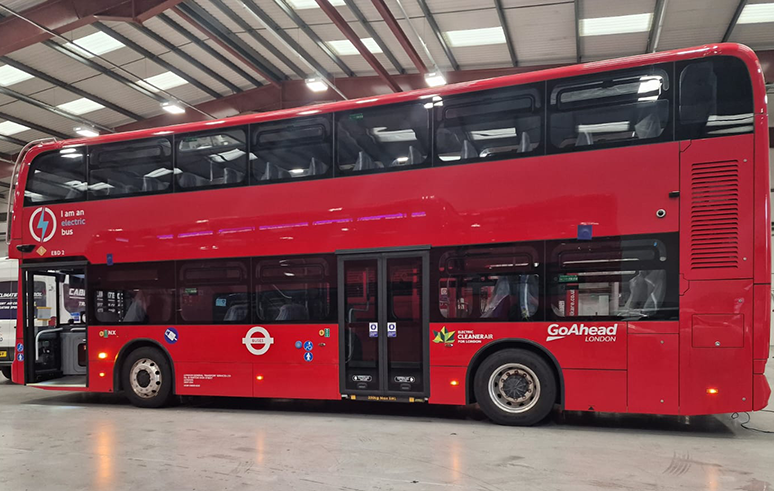Pros and Cons of CCTV vs. Dashcams on Buses and Coaches
The bus and coach industry is increasingly adopting technology to enhance safety, manage operations and improve customer satisfaction. A critical choice for operators is between installing a comprehensive 8-16 camera CCTV system or a simpler single dashcam setup. Both have their strengths and weaknesses, so understanding these can help operators make an informed decision based on their needs.
CCTV Systems
Pros
1. Comprehensive Coverage
A multi-camera setup provides a 360-degree view of the vehicle, including external surroundings and internal areas. This is particularly useful for monitoring passenger behaviour, driver performance and external incidents.
CCTV also doubles up as a driver aid. SURE Solutions install a driver monitor that is integrated with the side, reverse and emergency exits to show live video feeds depending on trigger events. For example, if the reverse gear is selected the rear facing camera would show on the driver monitor. If an indicator is active, then a side camera would show on the monitor eliminating a potential blind spot.
2. Enhanced Security
With multiple angles covered, the system can deter theft, vandalism and other criminal activities. Recorded footage can also serve as evidence for investigations.
3. Improved Incident Analysis
Multi-camera setups allow for detailed reconstruction of accidents or incidents, showing what happened both inside and outside the vehicle.
4. Compliance with Regulations
In some areas of the country, such as London, multi-camera systems are necessary to meet safety and reporting standards, particularly for public transport.
5. Passenger and Driver Safety
Monitoring the interior of the bus can address passenger disputes, ensure driver accountability and help detect emergencies like medical incidents or unruly behaviour.
Cons
1. Higher Initial Cost
Installing an 8-16 camera system often requires a significant upfront investment for equipment, wiring and installation. However, finance packages can often offset this.
2. Maintenance
With multiple cameras and components, these systems demand regular maintenance to ensure optimal performance. Faults in wiring or cameras can disrupt the entire system. Fortunately, SURE Solutions have a dedicated team of engineers that can help with this.
3. Data Management
Multi-camera systems generate vast amounts of footage that require robust storage solutions and data management policies.
4. Potential for System Downtime
A single point of failure in a complex system, such as the central recording device, can compromise the entire setup.
Dashcam
Pros
1. Cost-Effective Solution
Dashcams are usually cheaper to purchase and install, compared to multi-camera systems, making them an attractive option for small operators or those with budget constraints.
2. Ease of Installation
A single dashcam is quick and easy to set up, with minimal disruption to operations.
3. Focused Coverage
Dashcams are excellent for capturing footage of the road ahead, which is often sufficient for analysing front collisions, near-misses, or reckless driving incidents.
4. Simple Data Management
With only one camera, data storage and retrieval are straightforward and less demanding compared to multi-camera setups. CCTV systems typically have hard drives with much larger storage capacity. Dashcams often have a smaller internal memory or use SD cards.
Cons
1. Limited Coverage
Dashcams capture only a narrow field of view, typically the road ahead. They cannot monitor the interior of the bus, blind spots or the rear, leaving significant gaps in coverage. Buses and coaches are long vehicles, therefore a forward-facing camera on its own will not be enough, in most cases, to defend against liability in an insurance claim.
2. Reduced Utility for Passenger Safety
A single dashcam does not address passenger behaviour, disputes or safety concerns within the vehicle.
3. Minimal Deterrence for Vandalism
Since a dashcam is usually only visible from the front, it does little to deter crimes or vandalism elsewhere on coaches or buses. Dashcams are actually easily tampered with themselves and a possible target for vandalism. With SURE CCTV systems, we use anti-tamper micro dome cameras and DVR systems are installed in a locked compartment.
4. Less Useful for Incident Reconstruction
The lack of multiple perspectives makes it harder to piece together the full story in complex incidents.
Which Option is Best?
The choice between an 8-16 camera CCTV system and a single dashcam depends on several factors:
- Fleet Size and Budget: Larger fleets with a focus on passenger safety may benefit from comprehensive CCTV systems, while smaller operators might find a single dashcam sufficient.
- Operational Needs: Operators transporting school children, tourists, or city commuters might prioritise interior monitoring, making multi-camera systems essential.
- Regulatory Requirements: In regions where detailed monitoring is mandatory, multi-camera systems are necessary.
A hybrid approach could also be considered, using a dashcam for external monitoring alongside a smaller CCTV setup for critical interior and blind-spot coverage.
Conclusion
Both options offer valuable benefits for the bus and coach industry, but their effectiveness depends on the operator’s specific needs, regulatory environment and budget. Weighing these factors carefully will help operators make the best choice to ensure safety, efficiency, and peace of mind for passengers and drivers alike.
If you wish to discuss the options for CCTV or dashcam installation on your fleet, contact our friendly team today for free, no-obligation advice.































